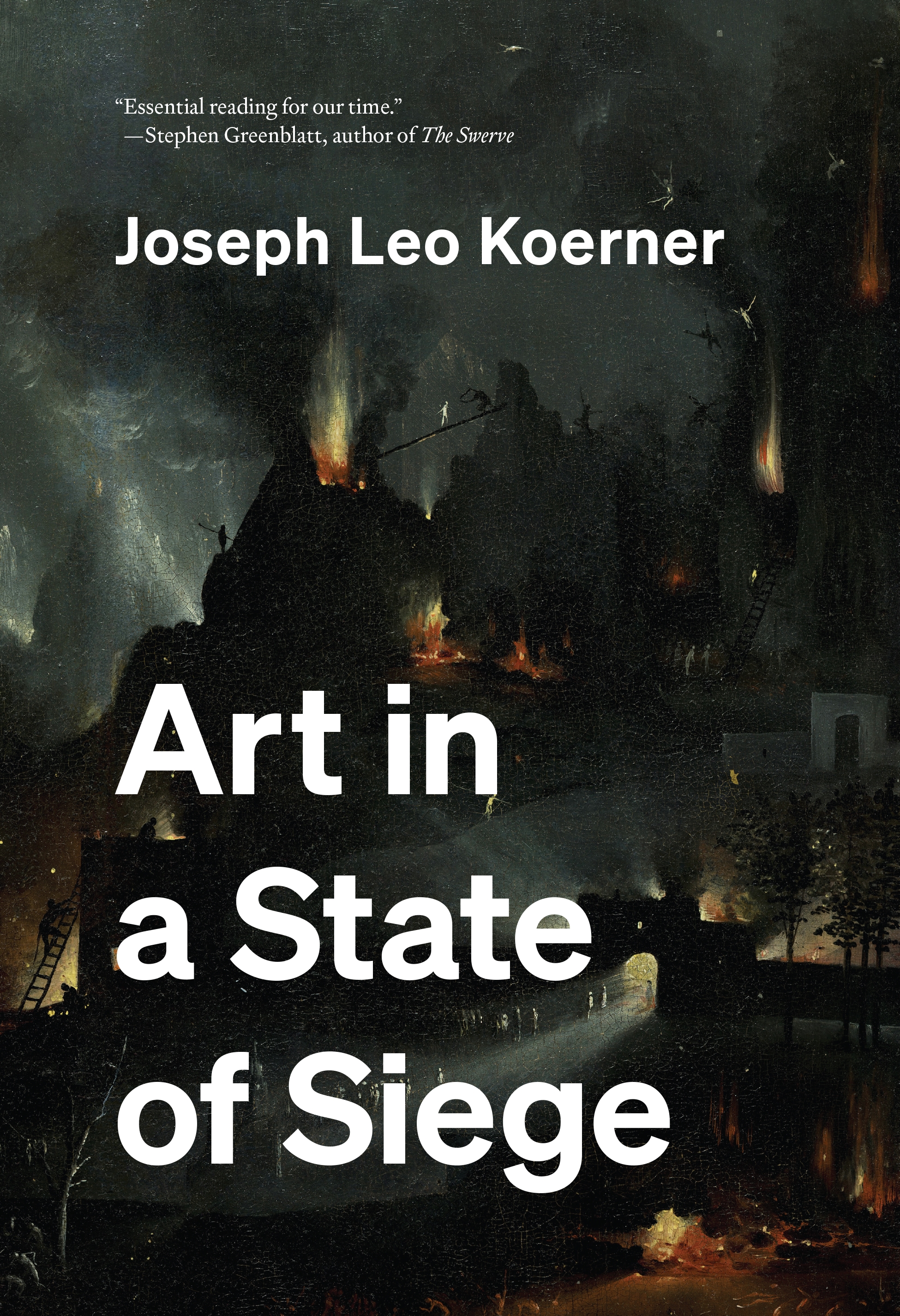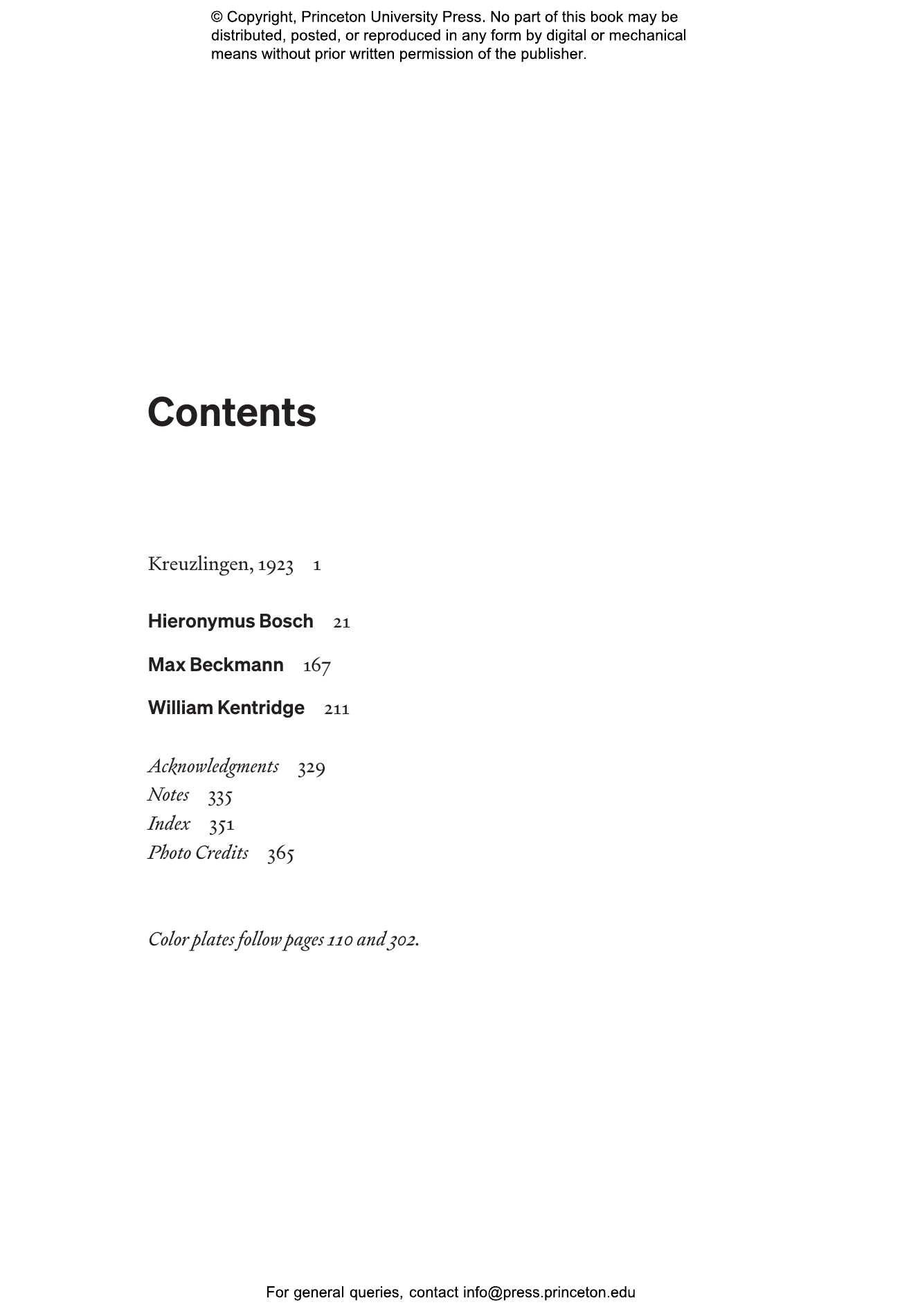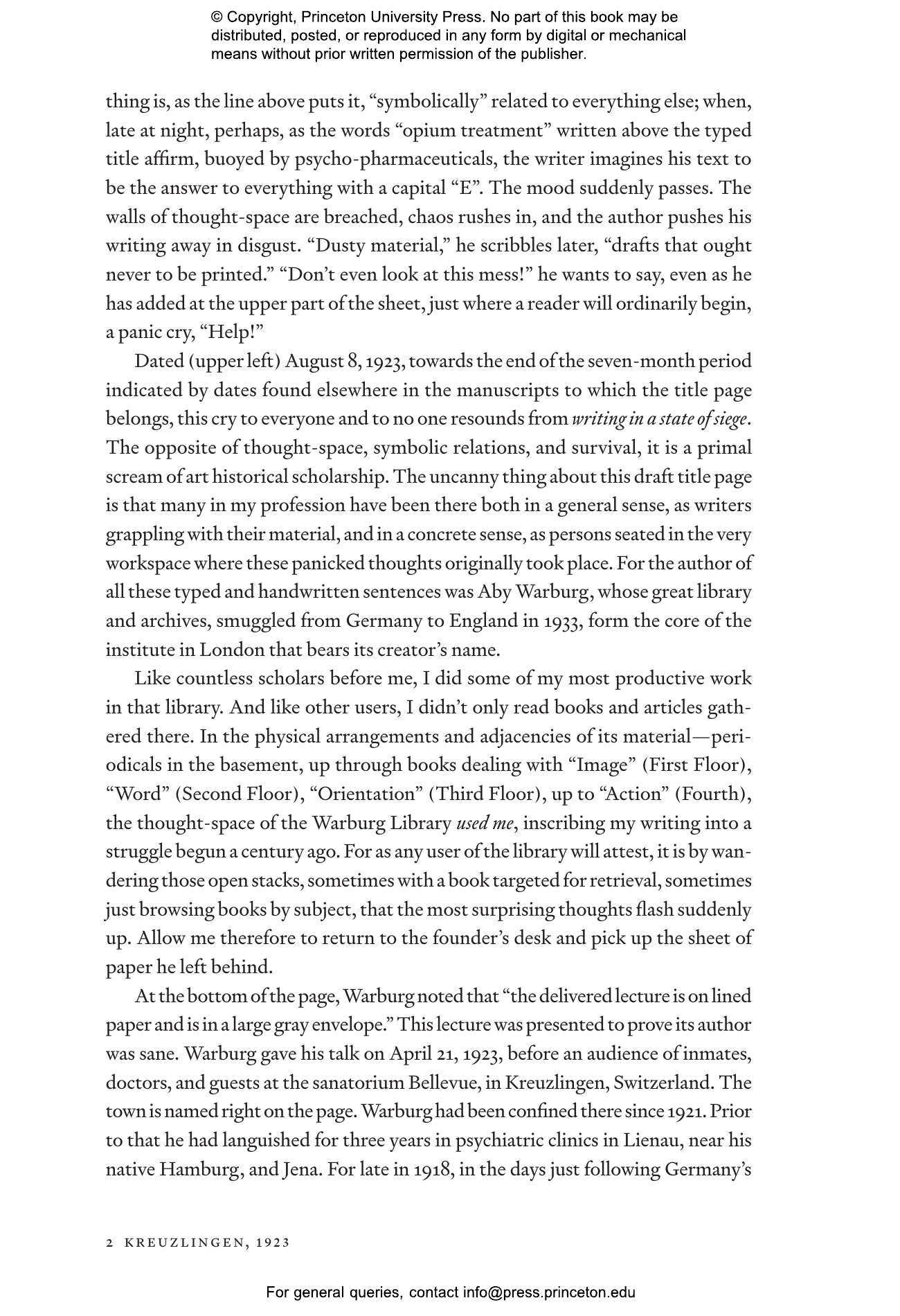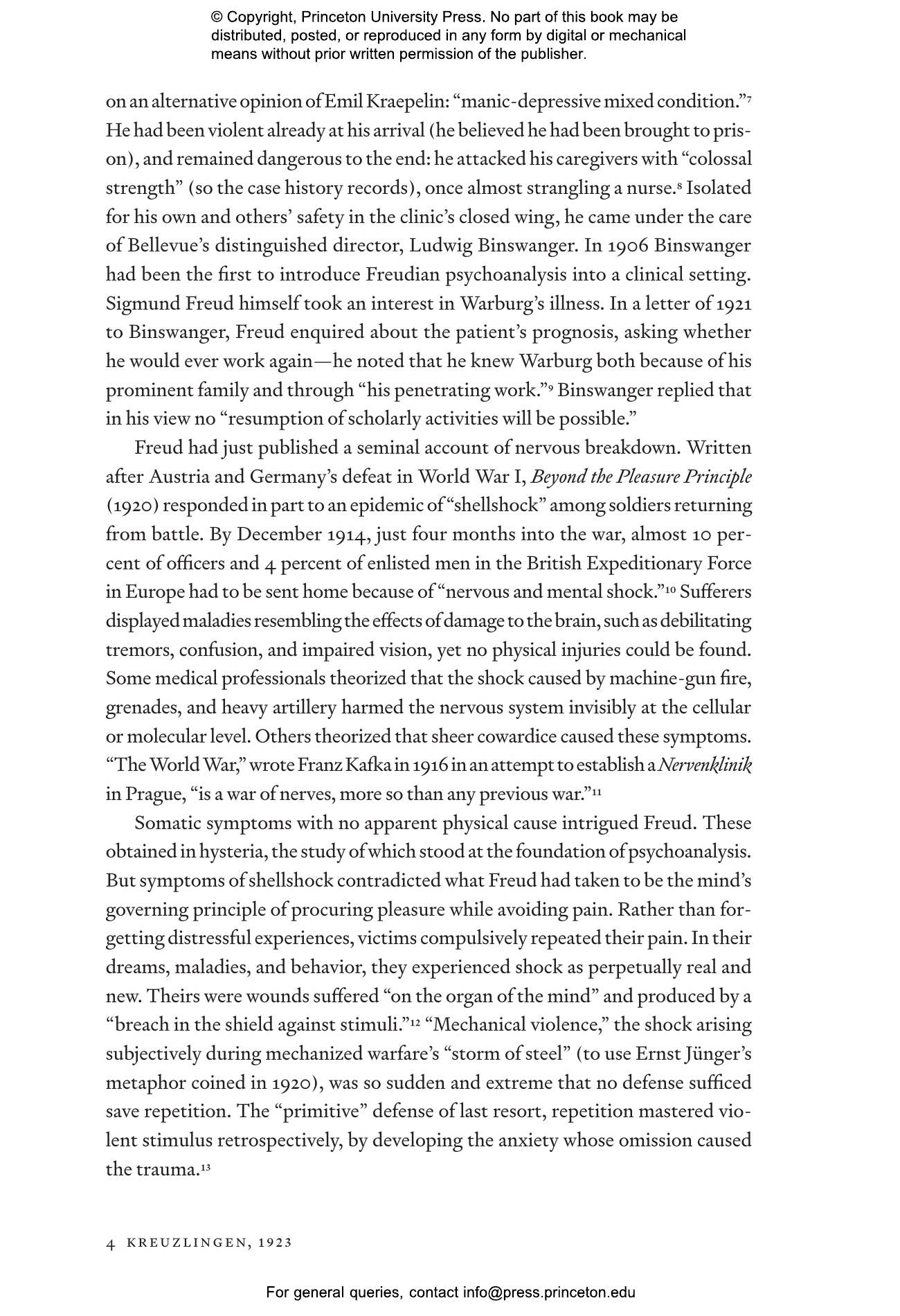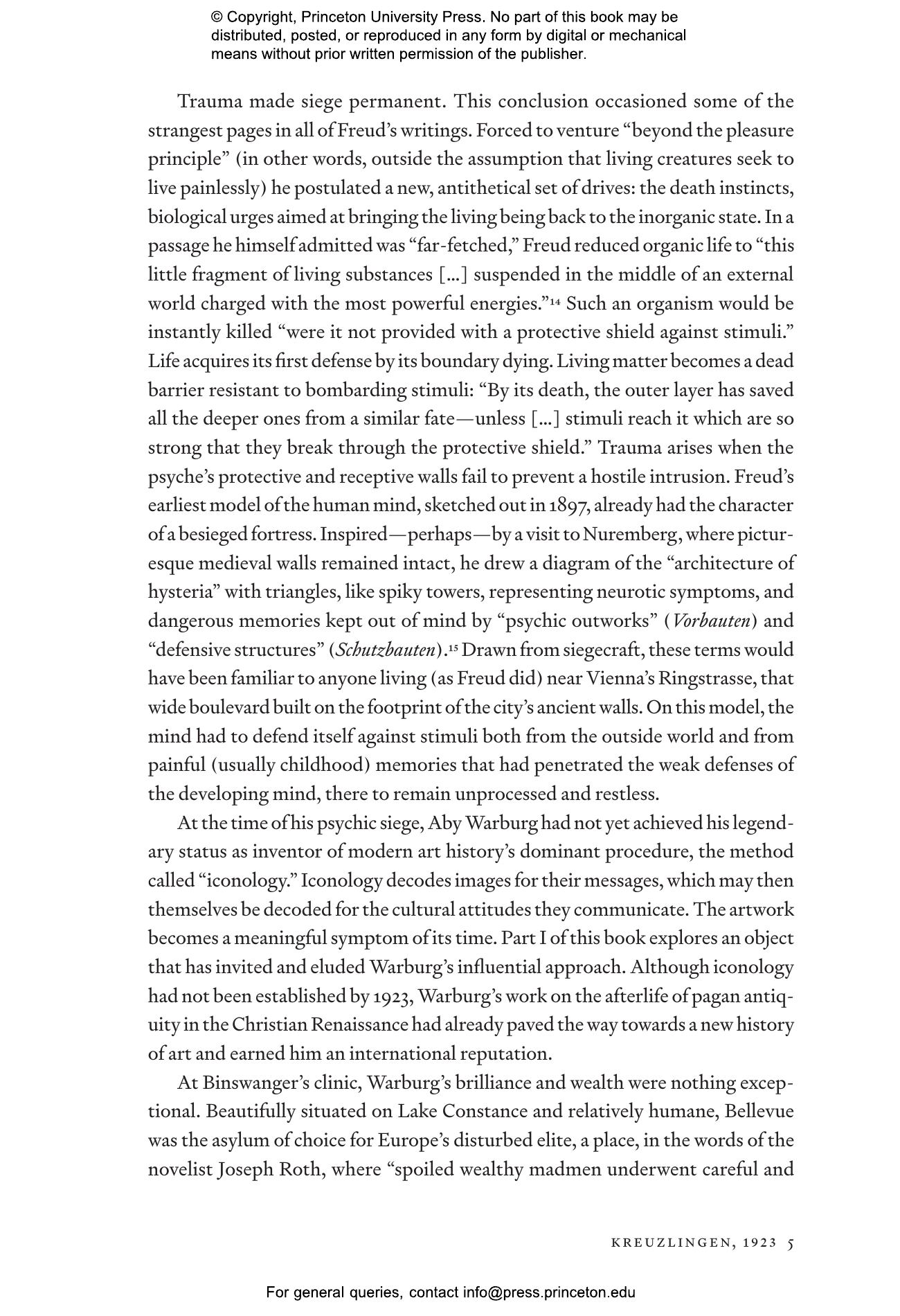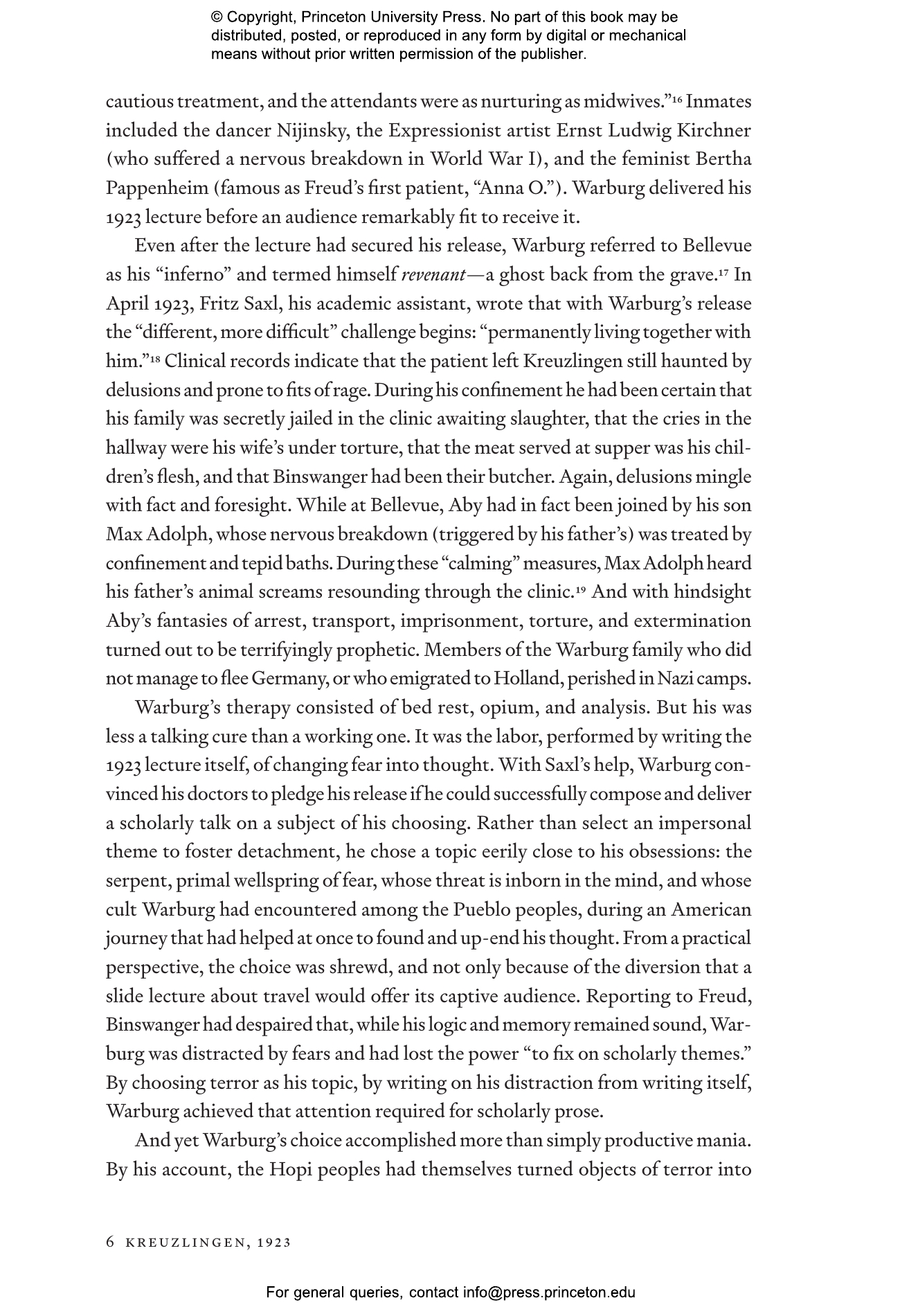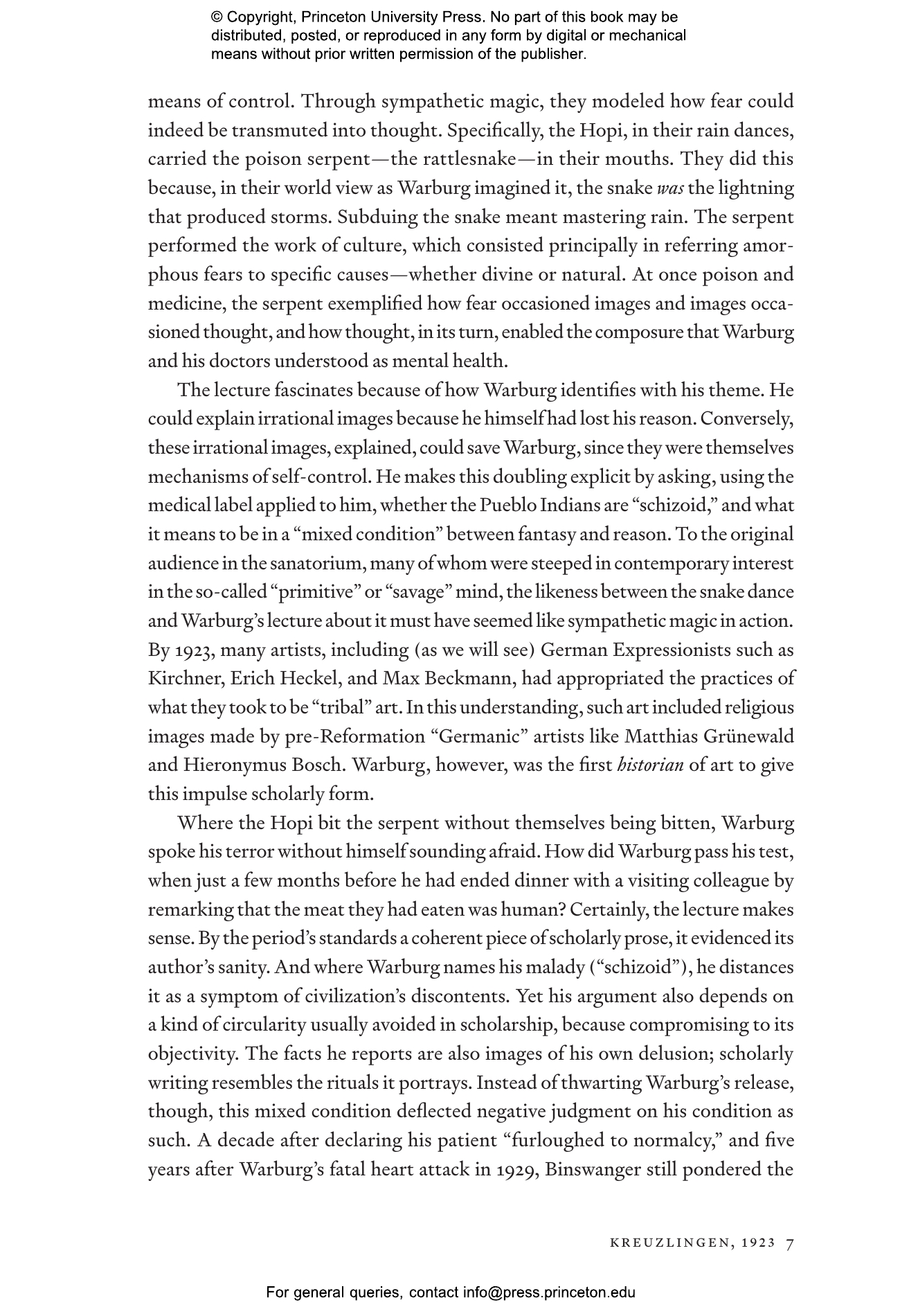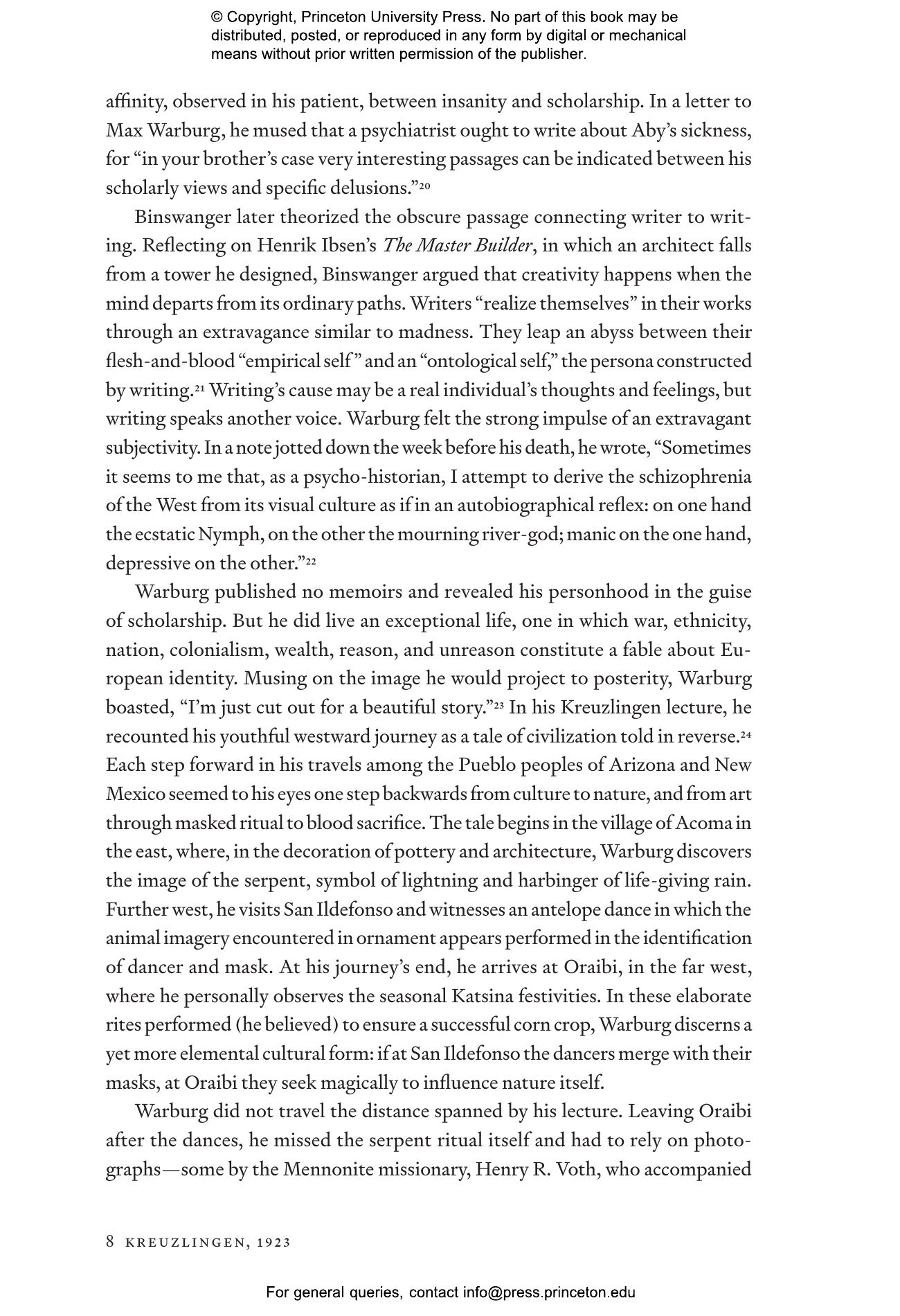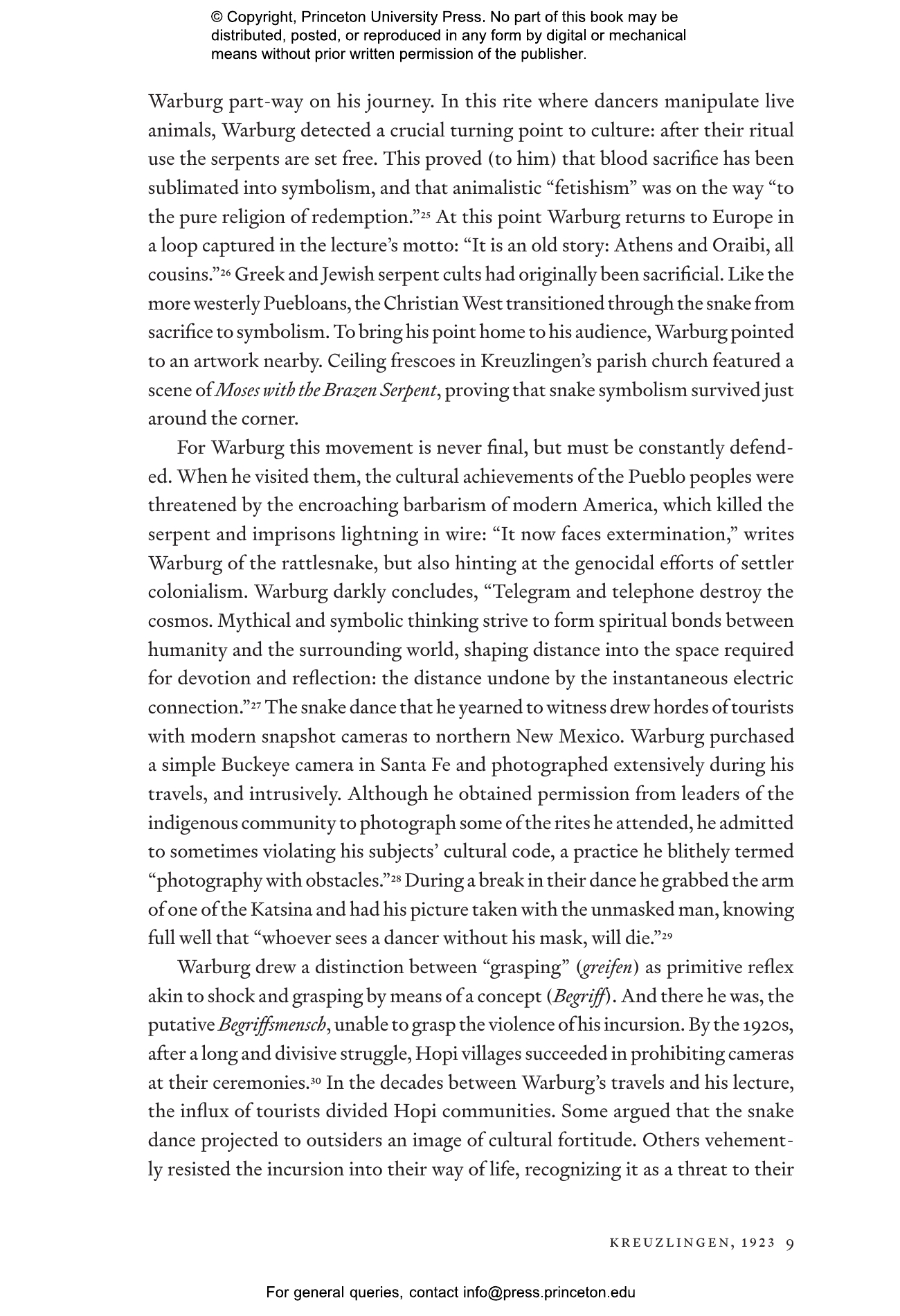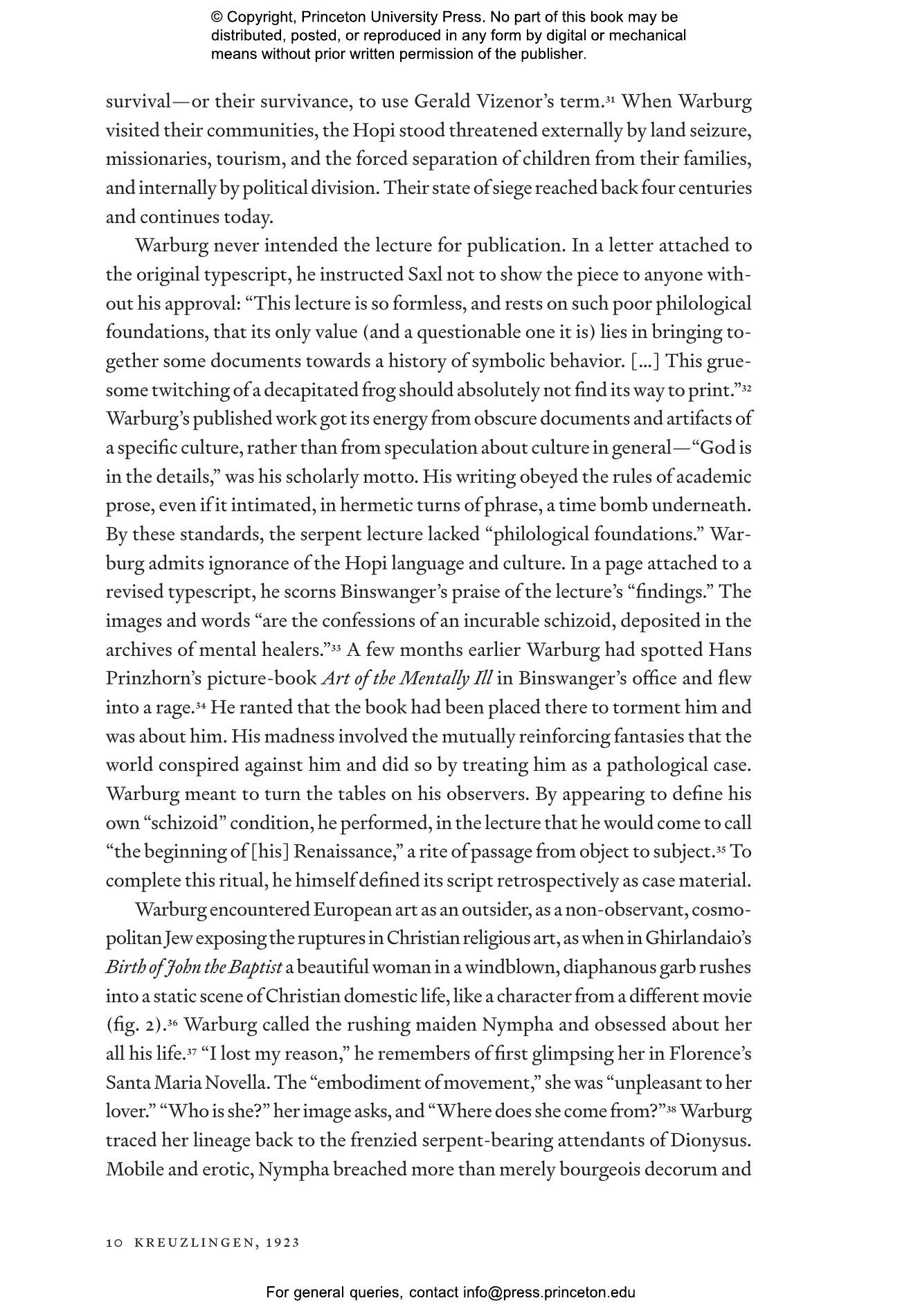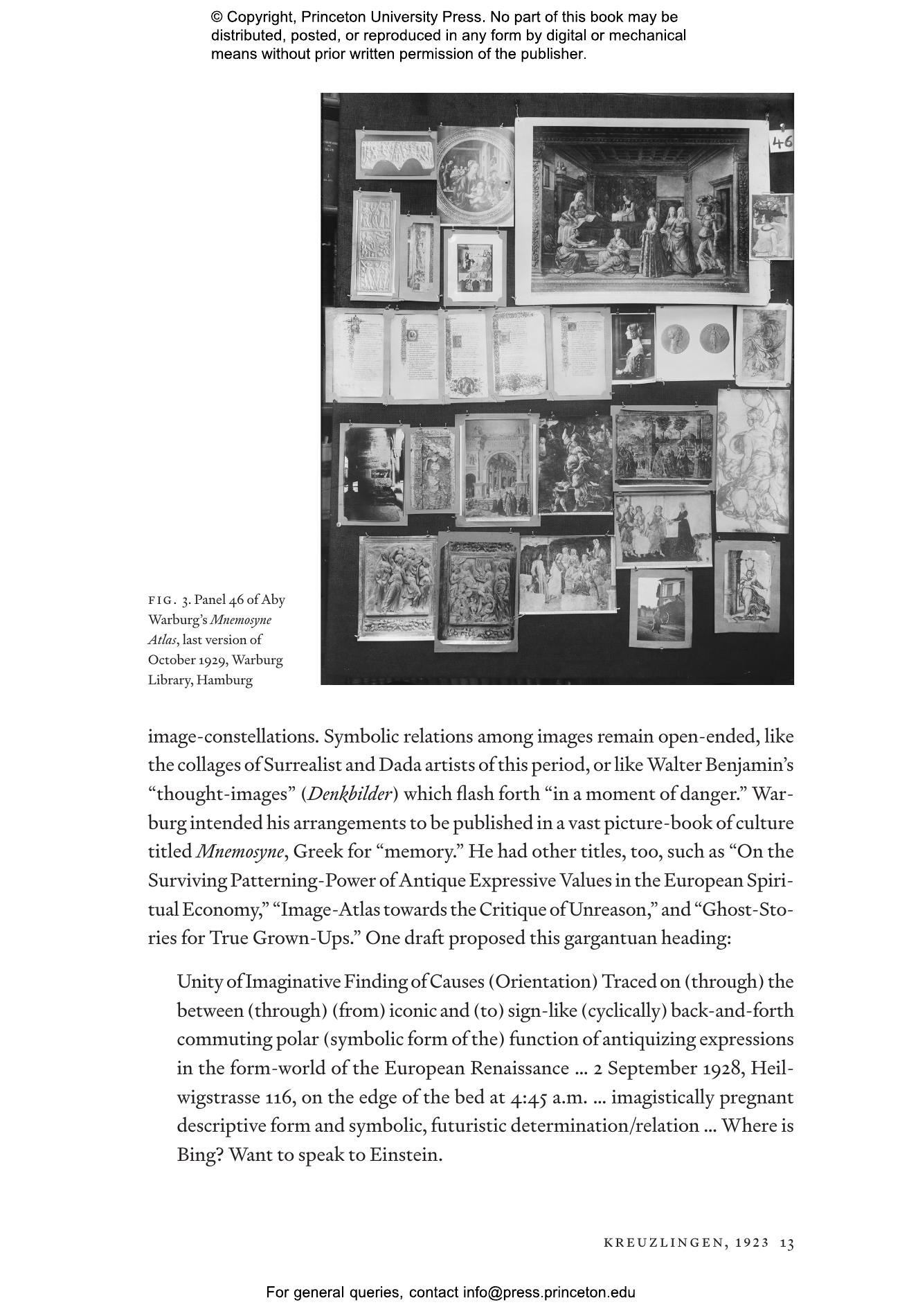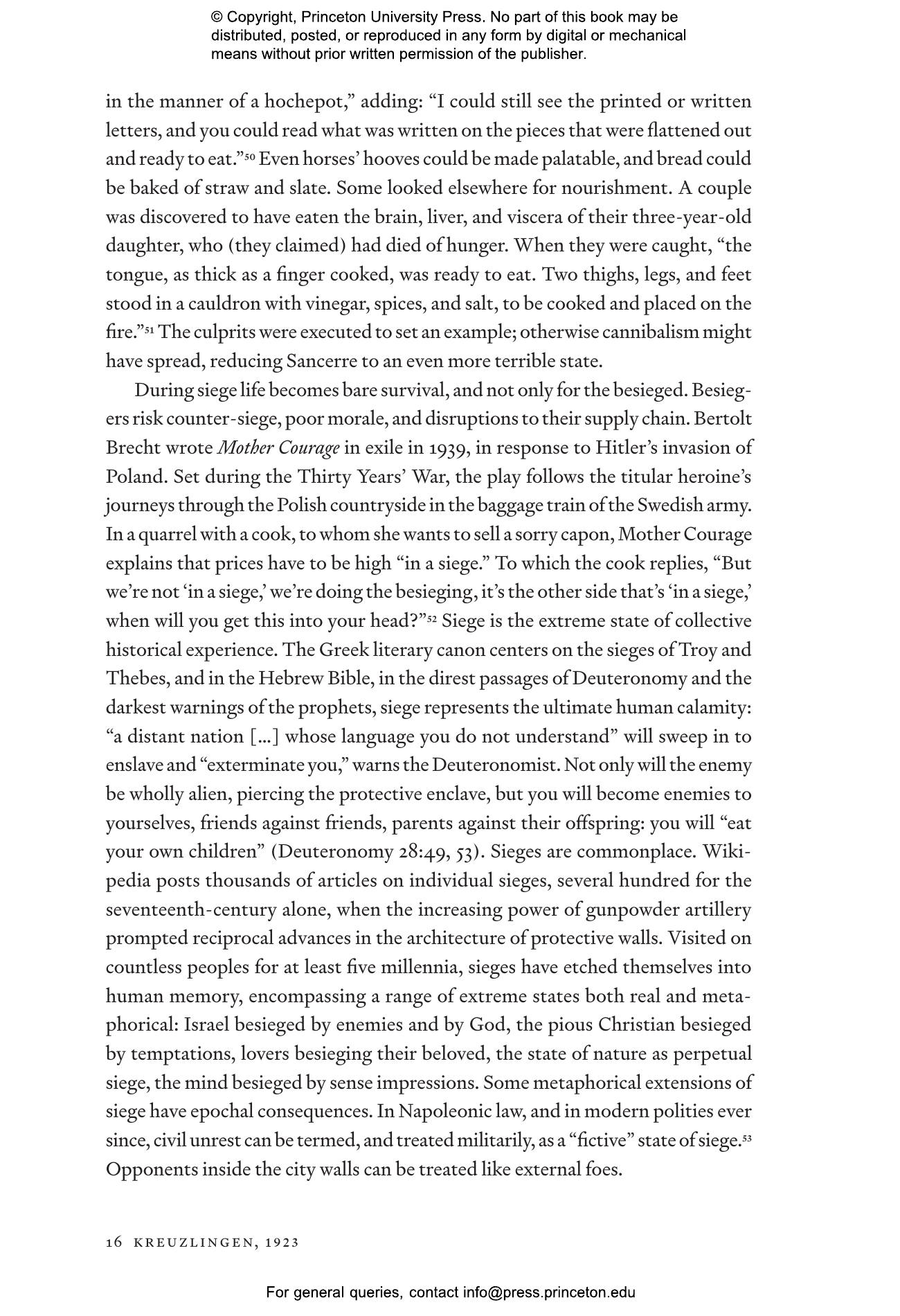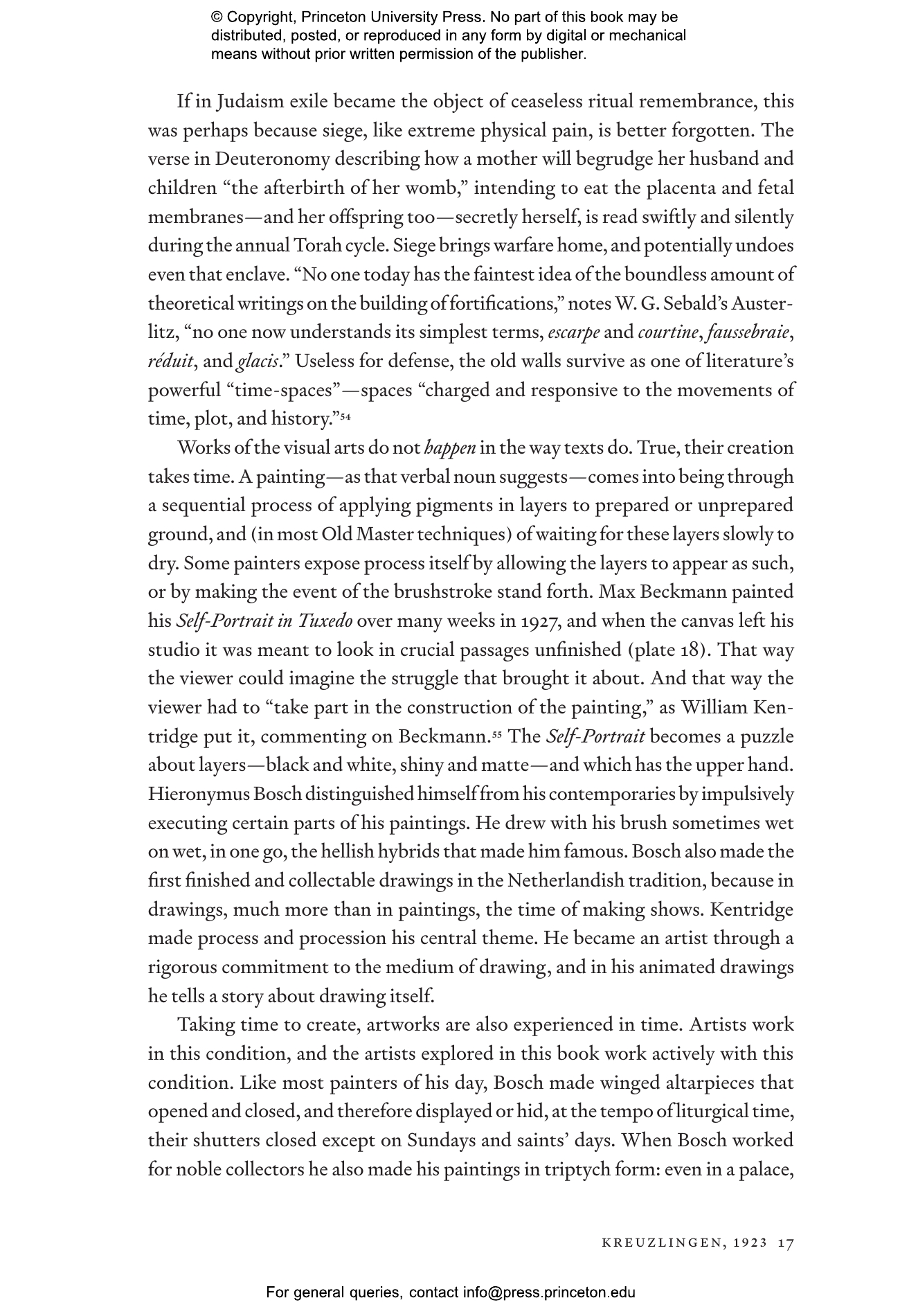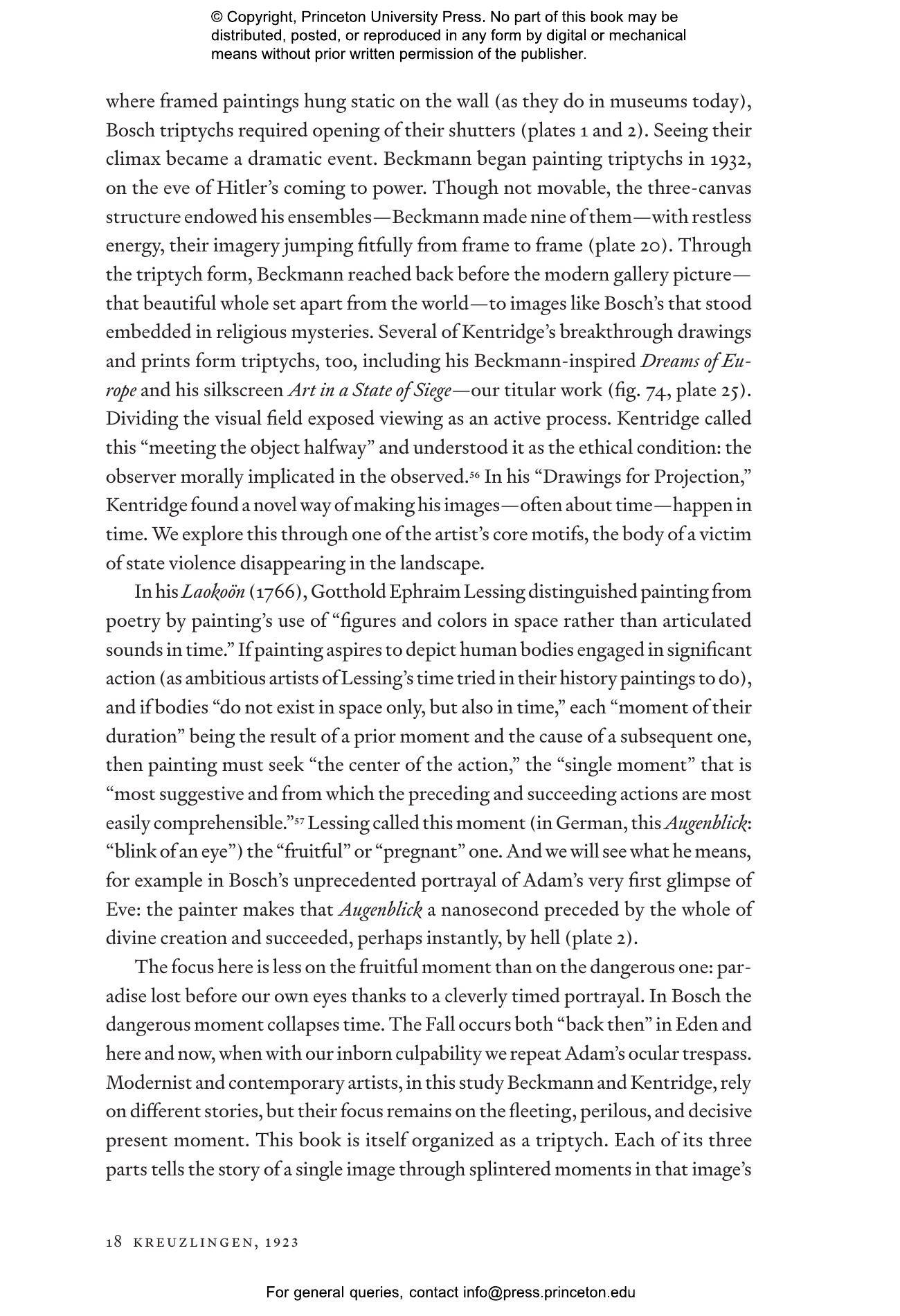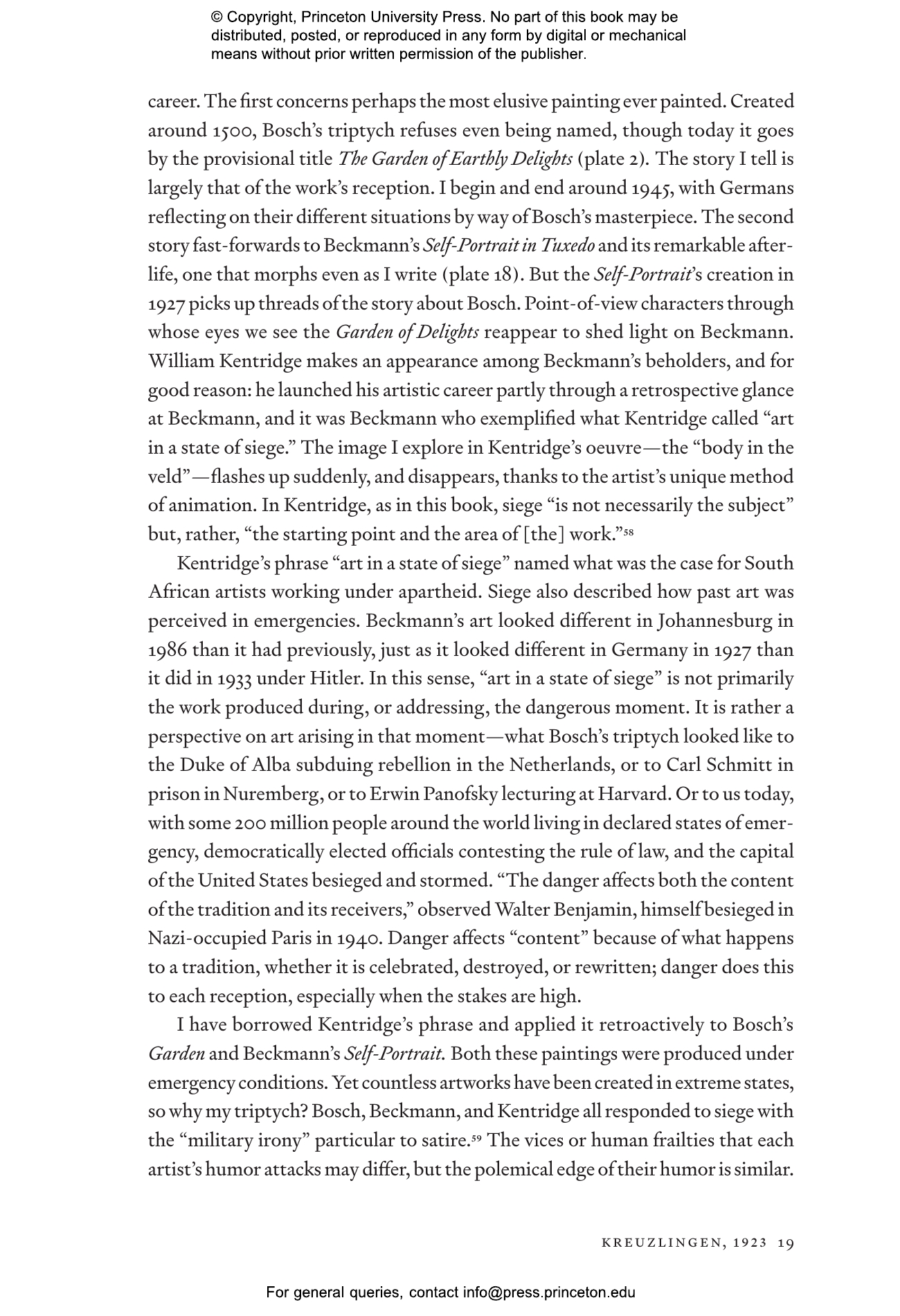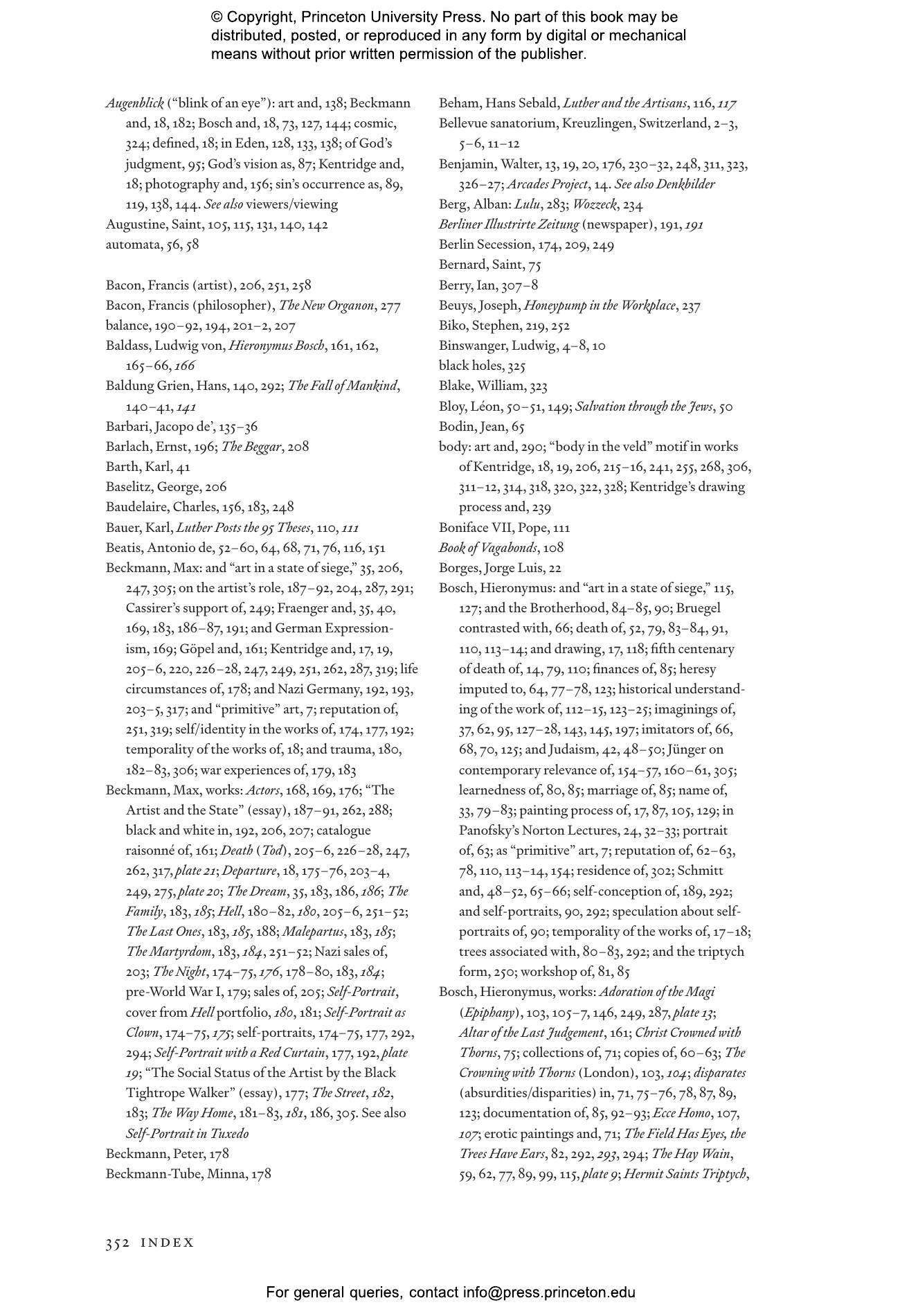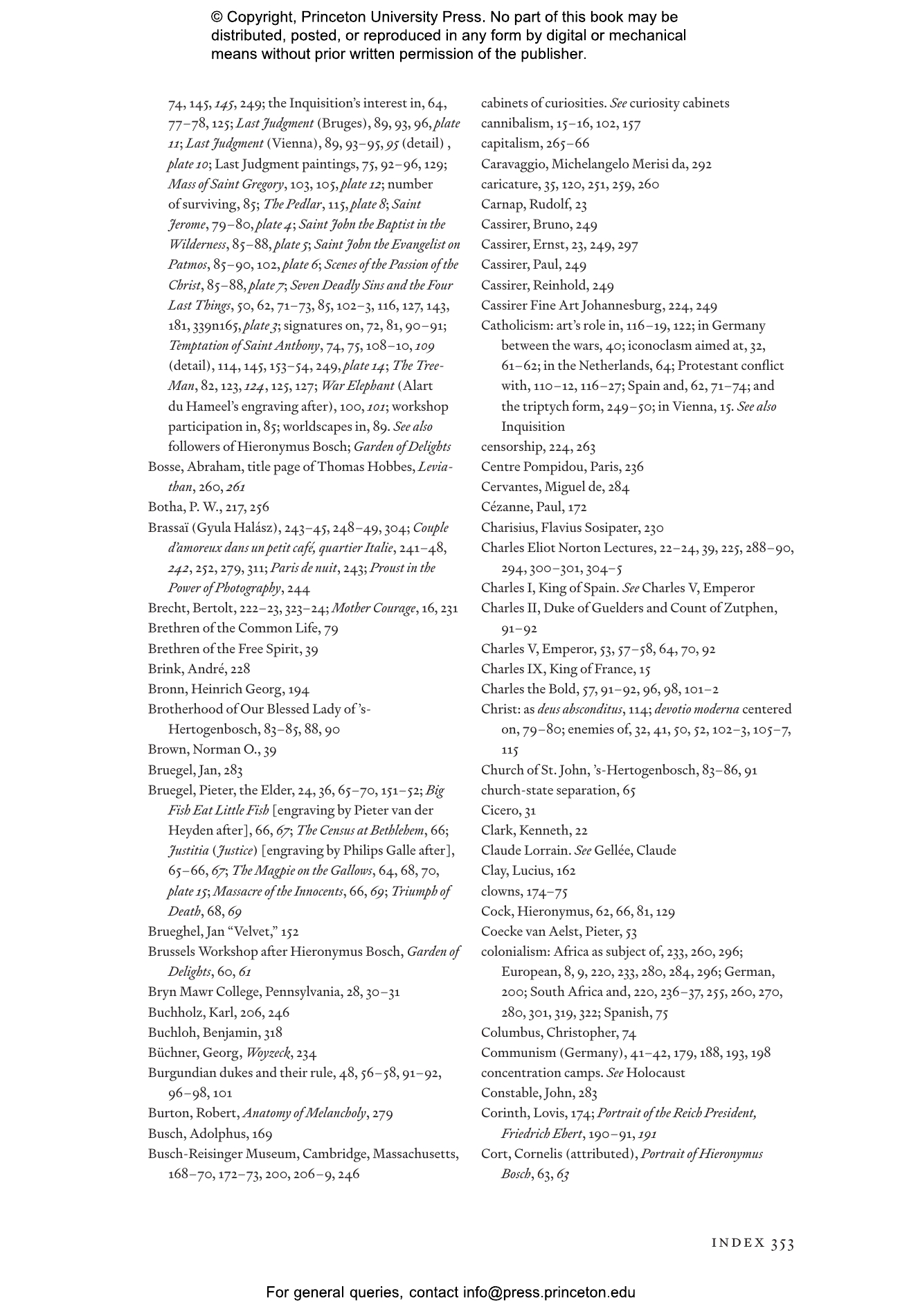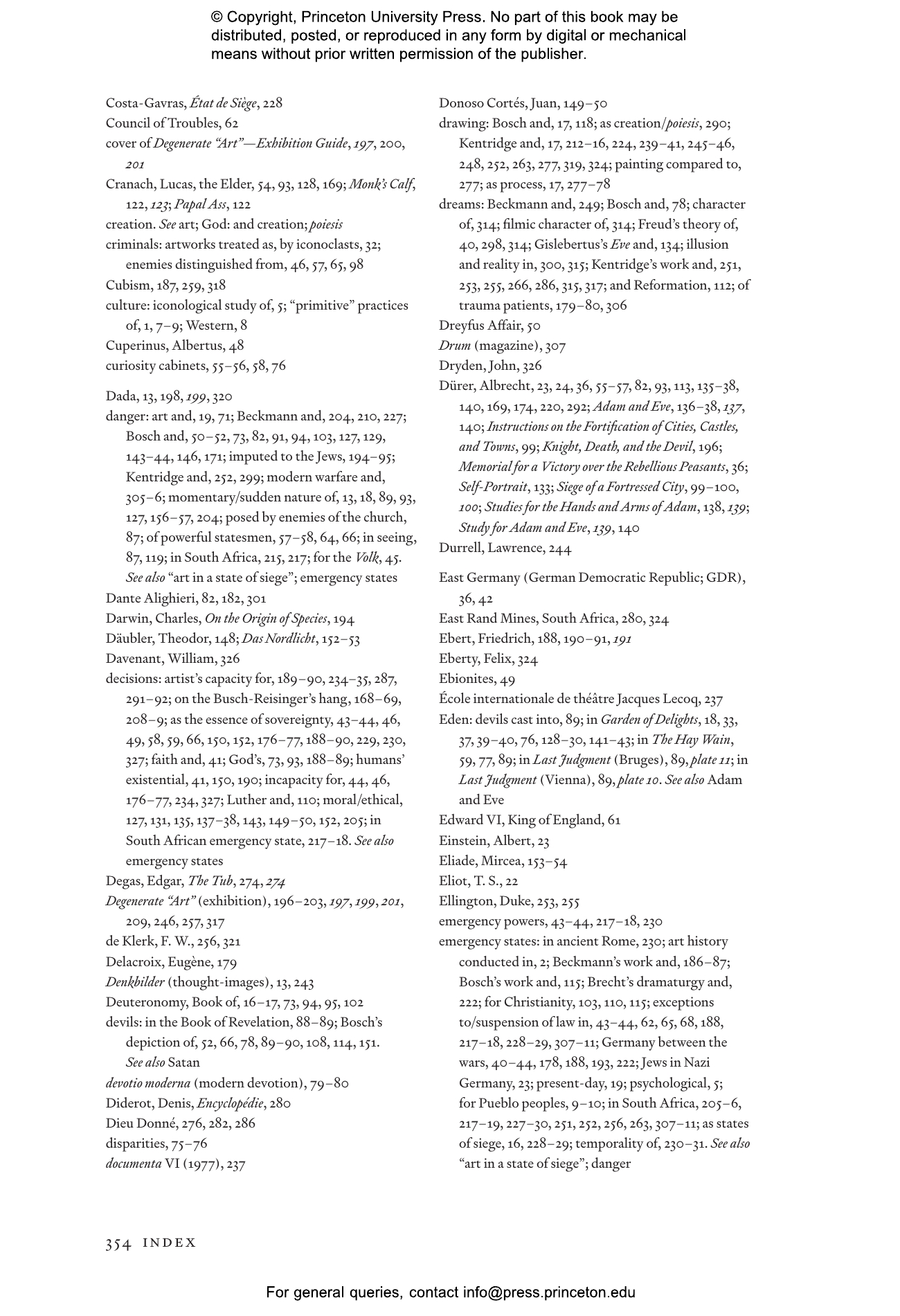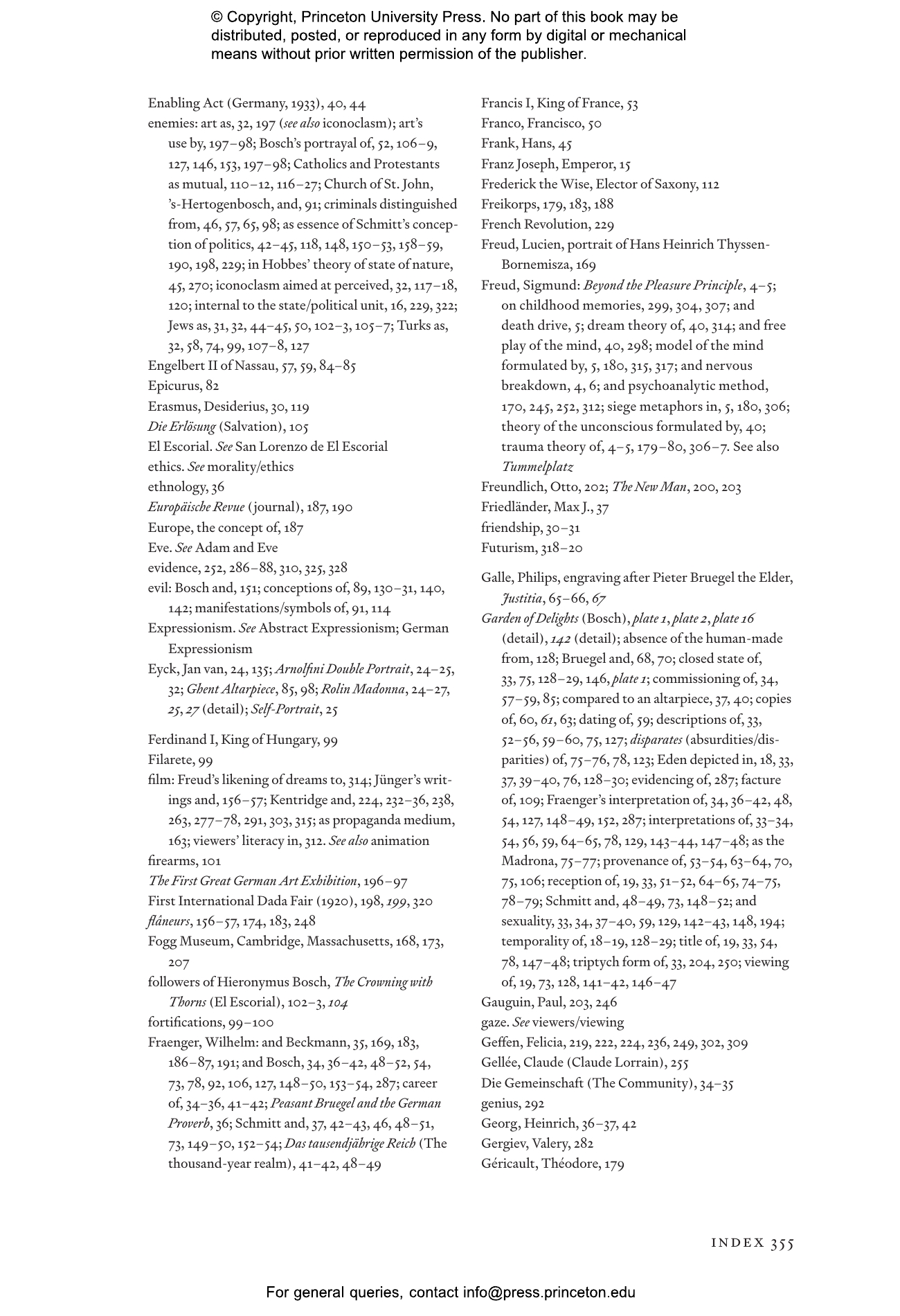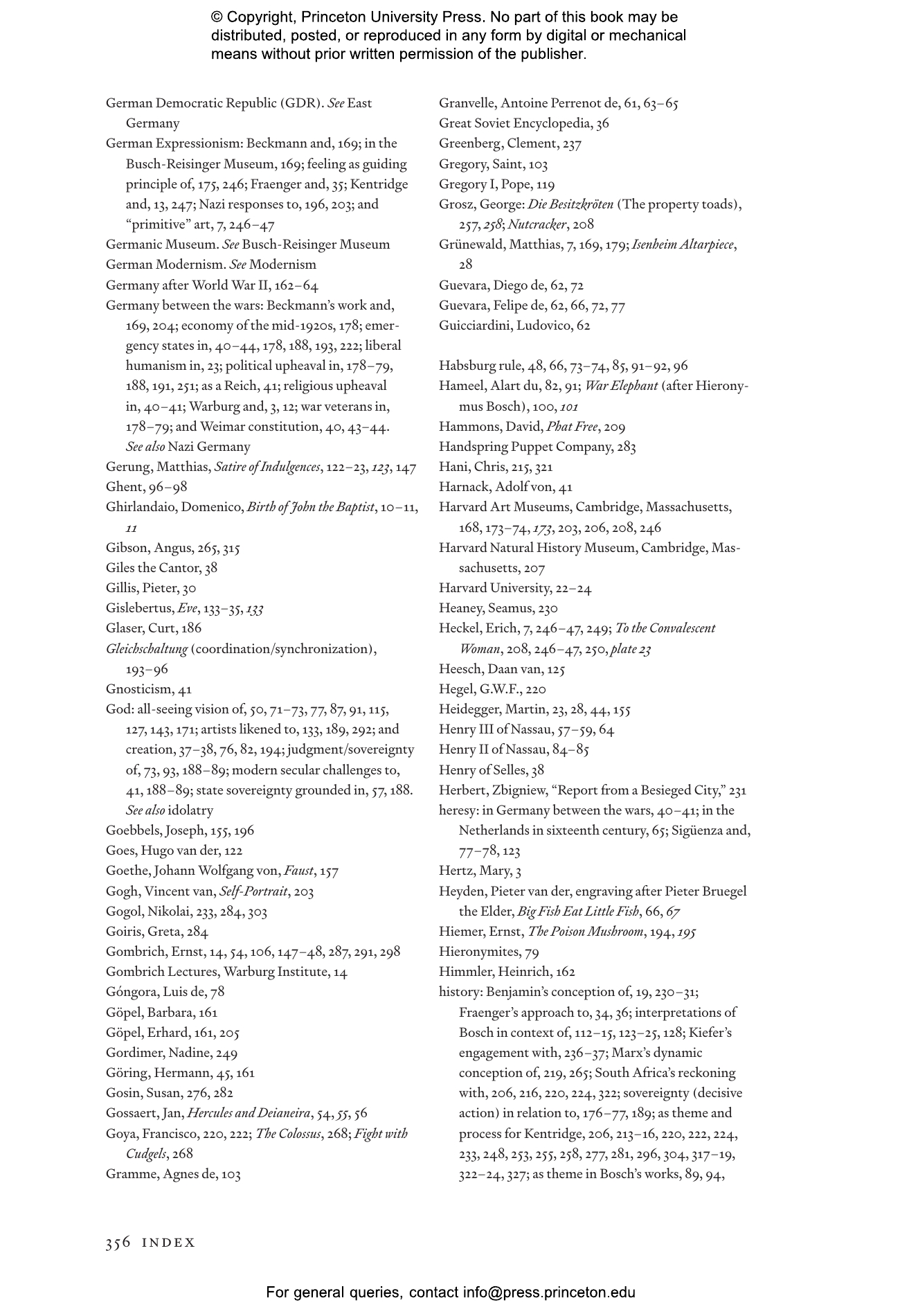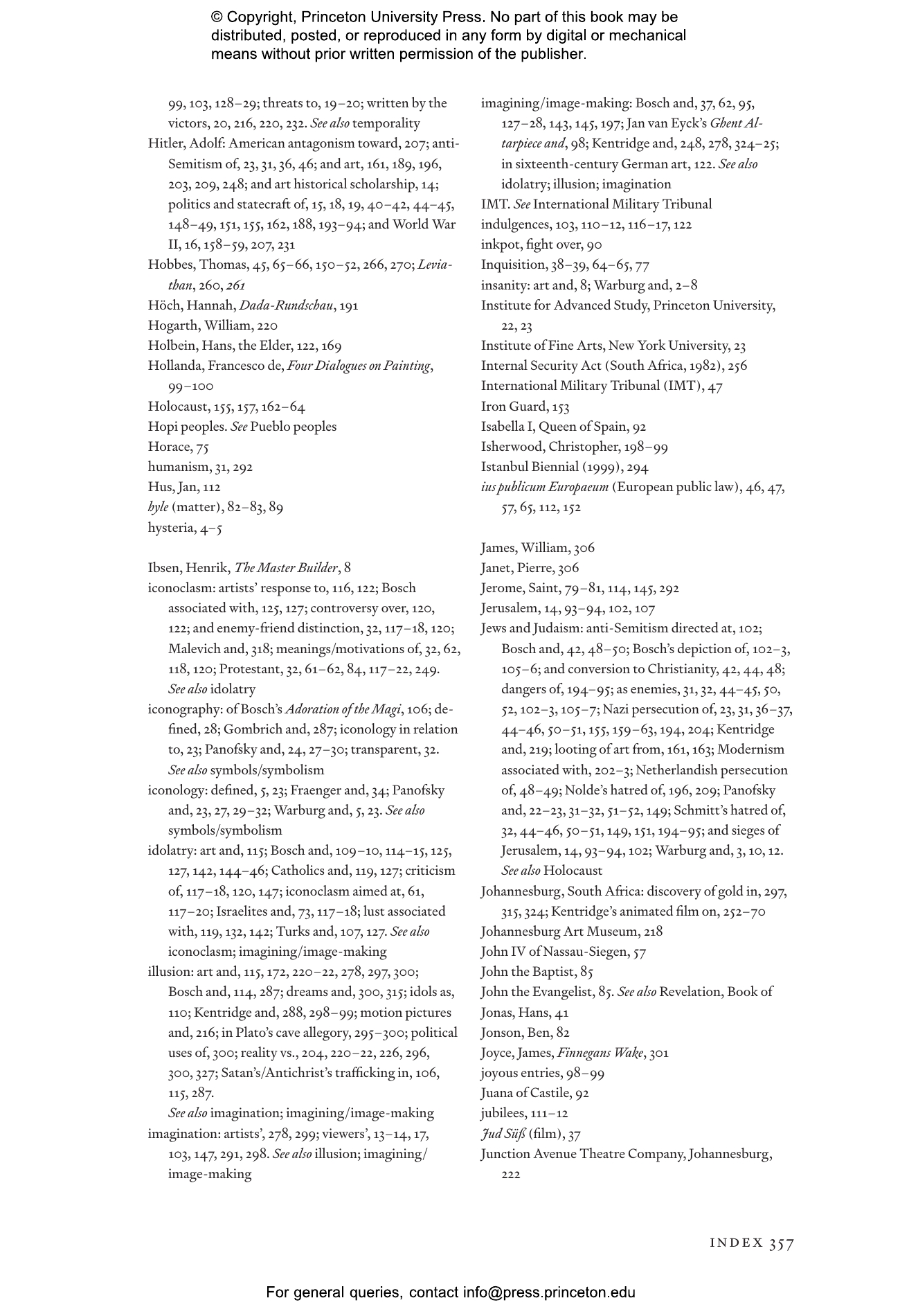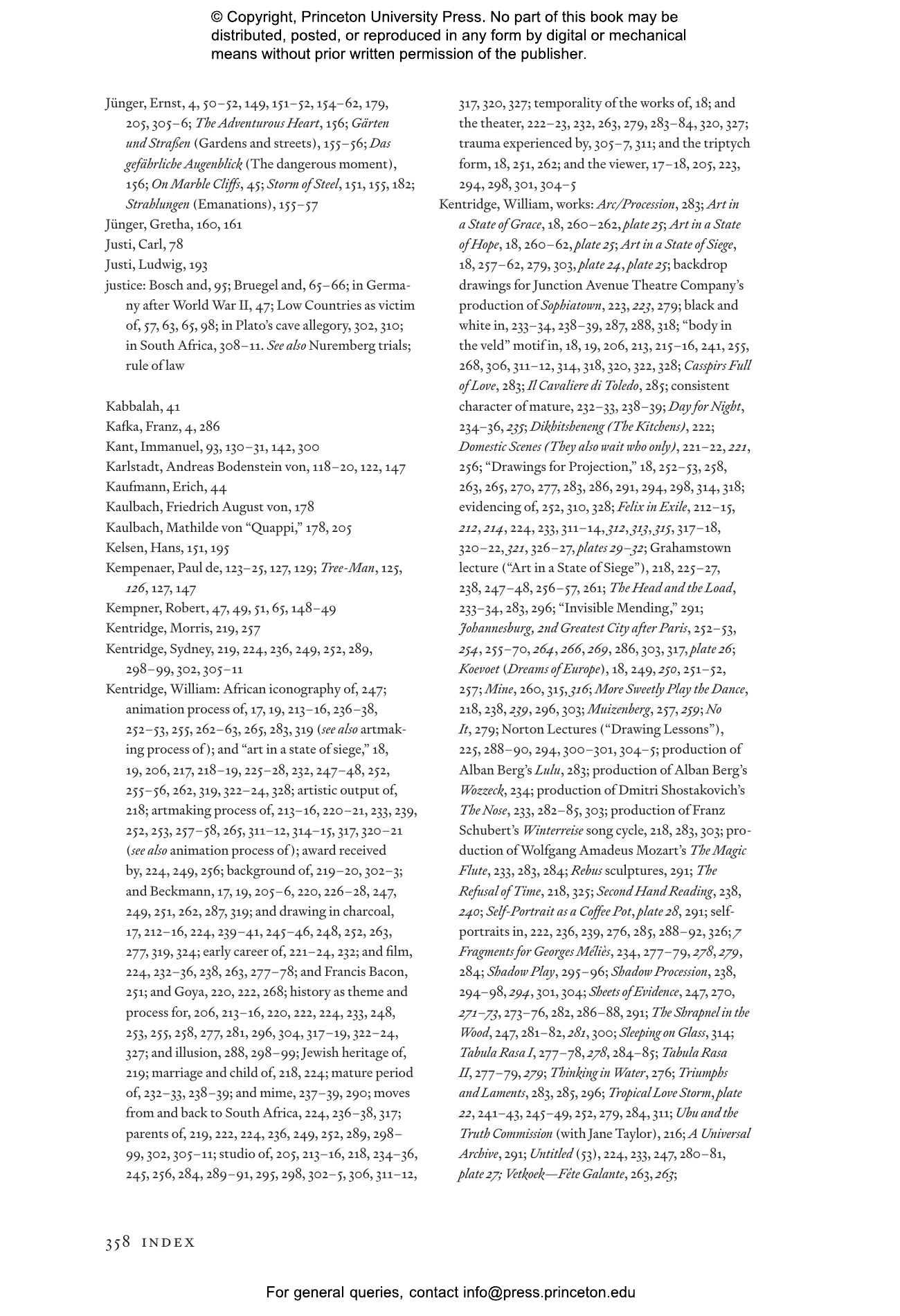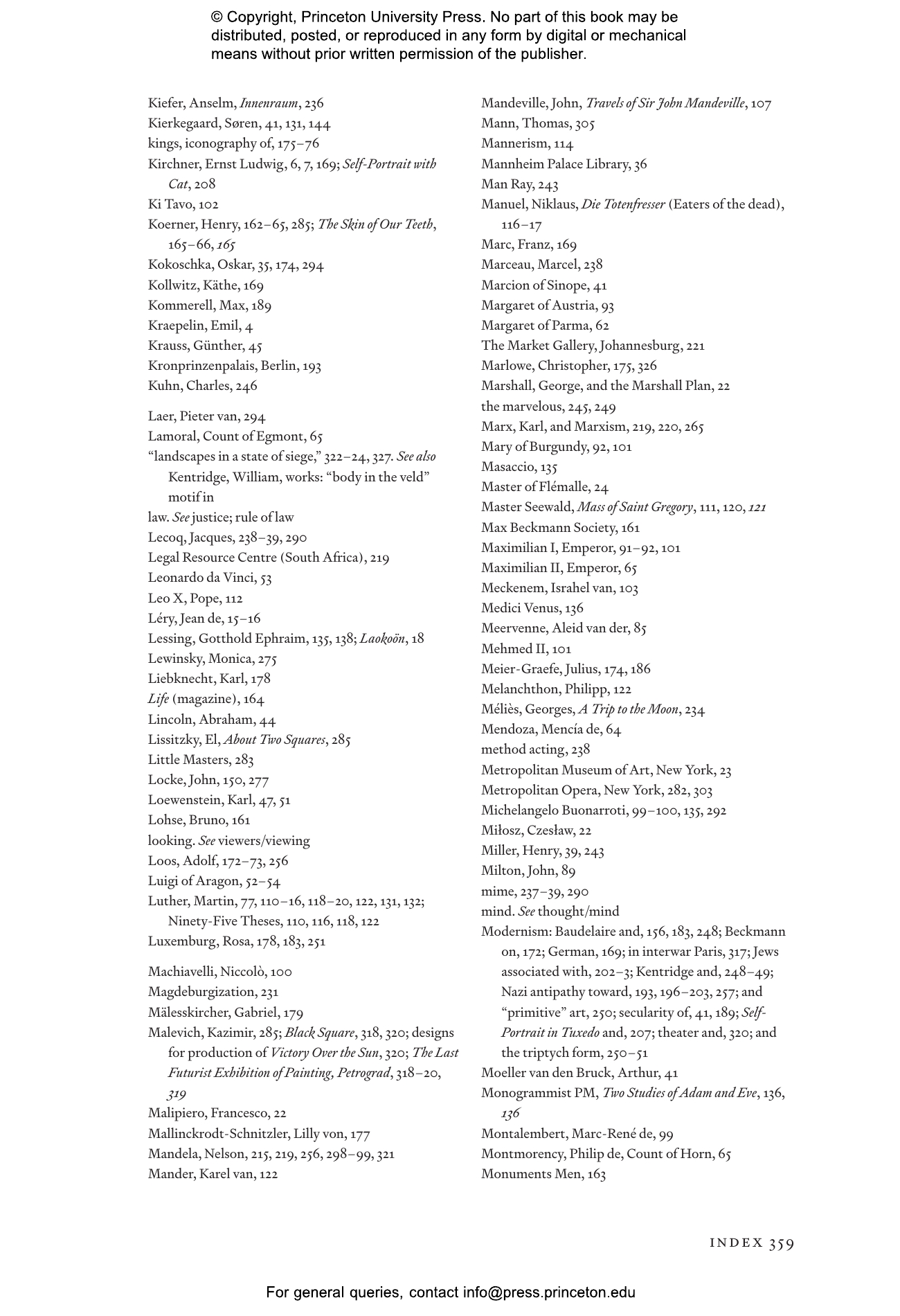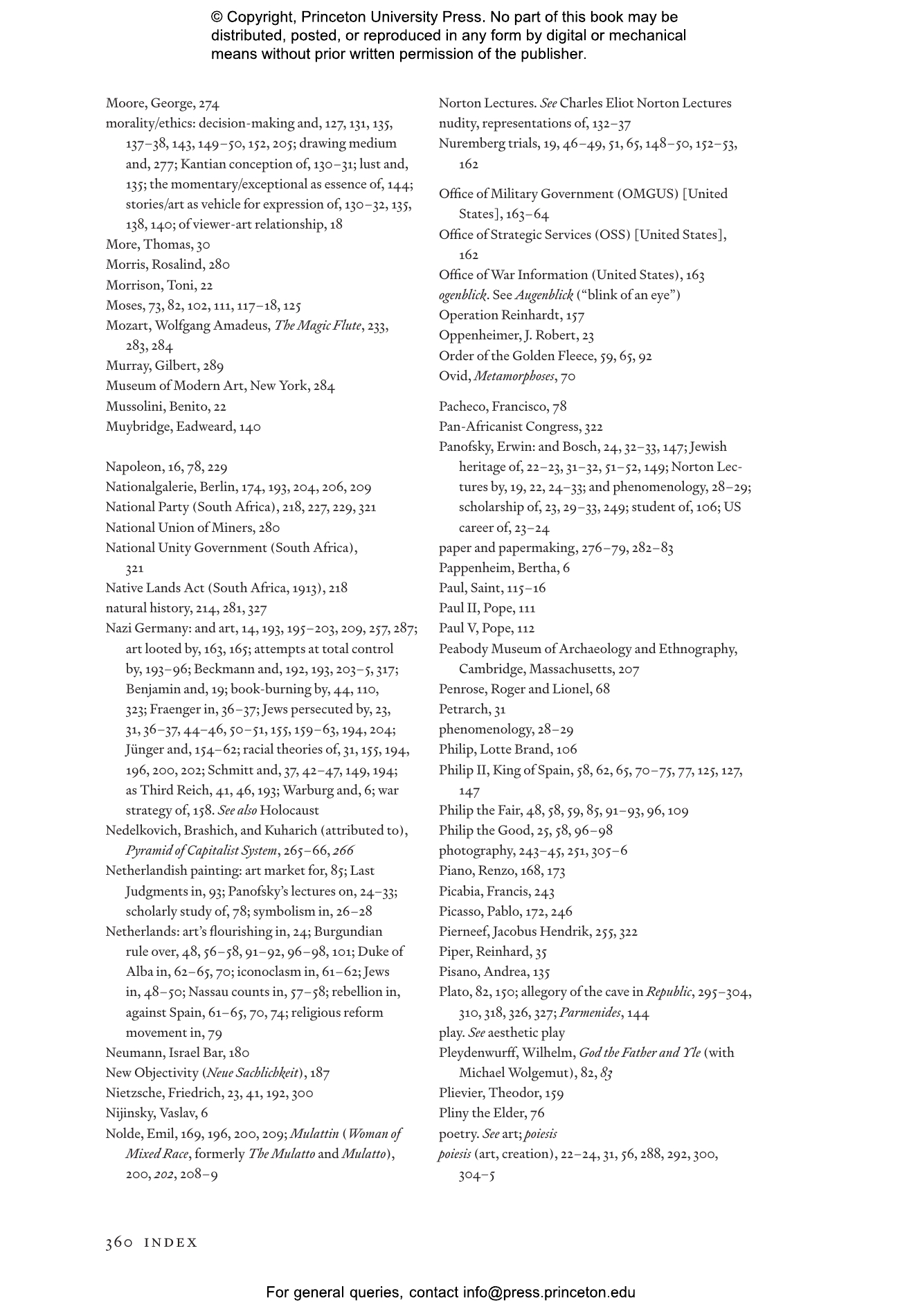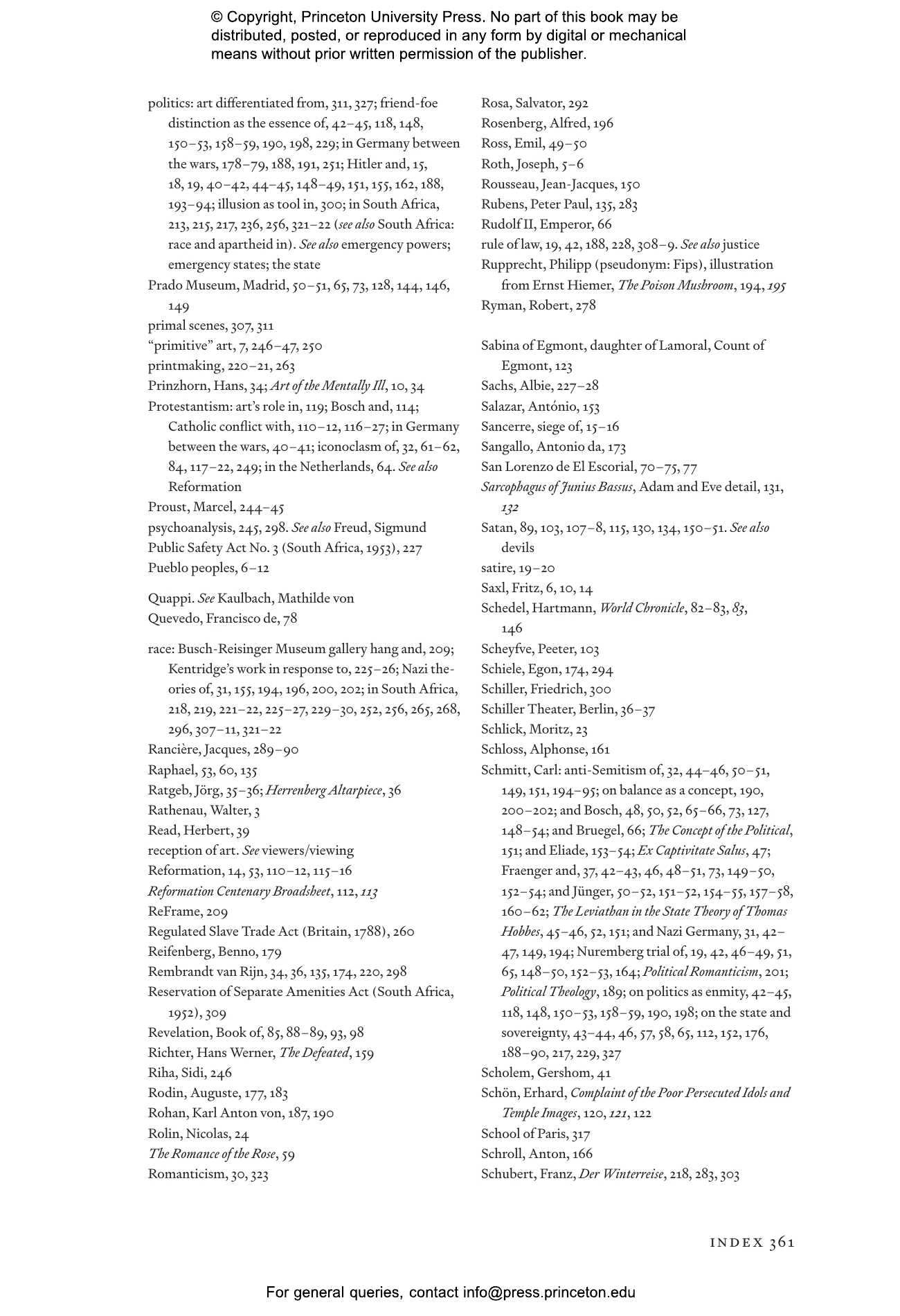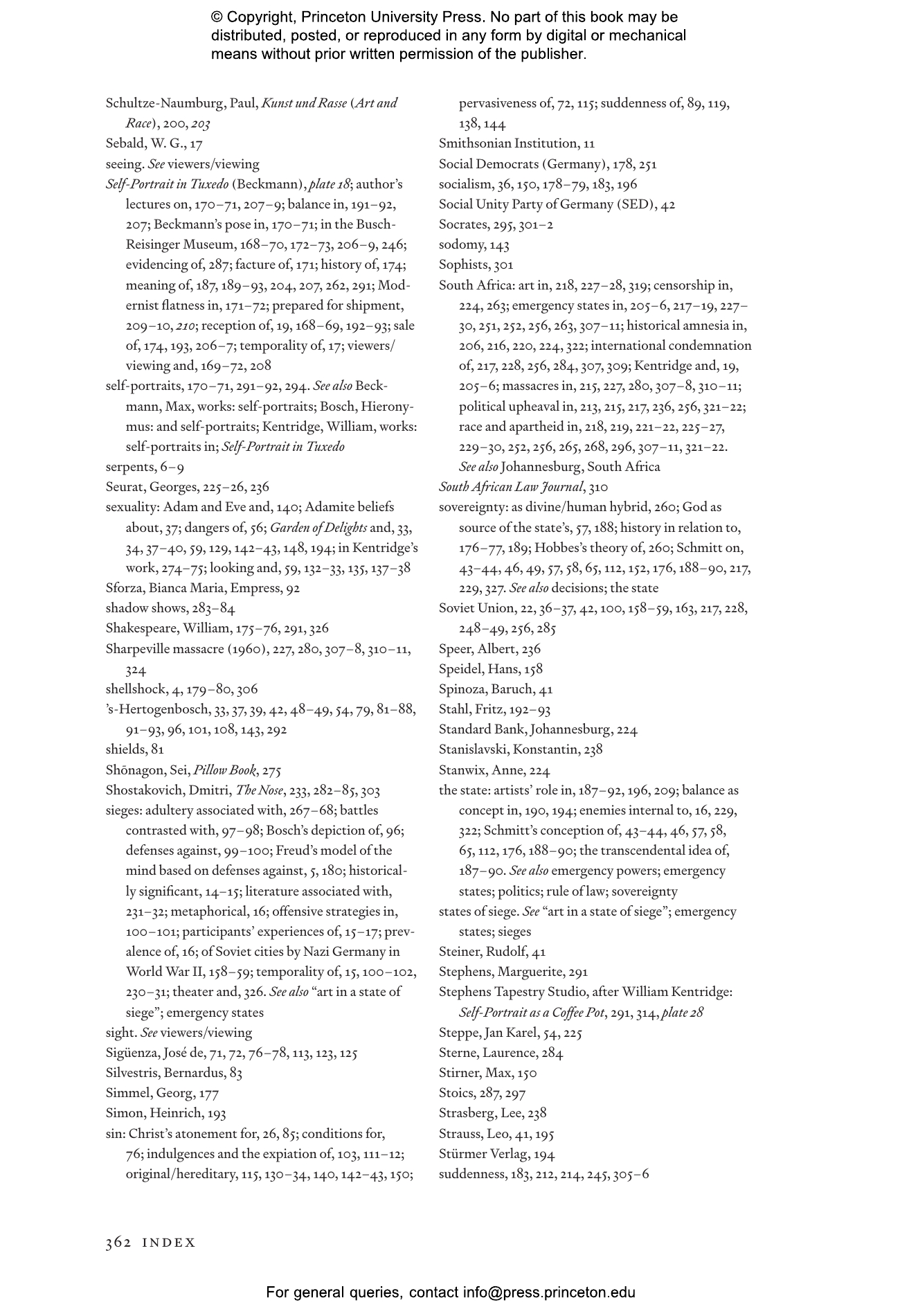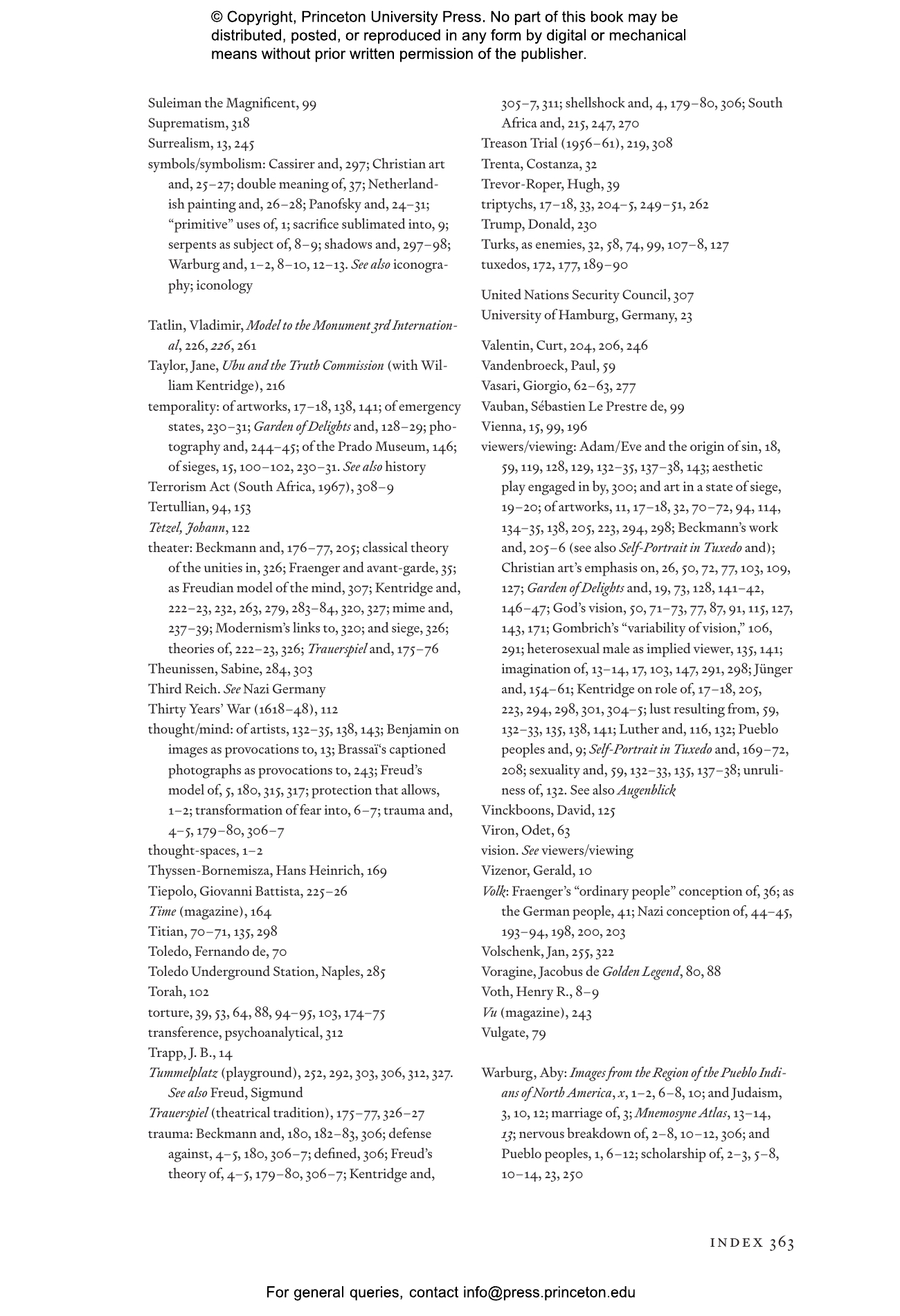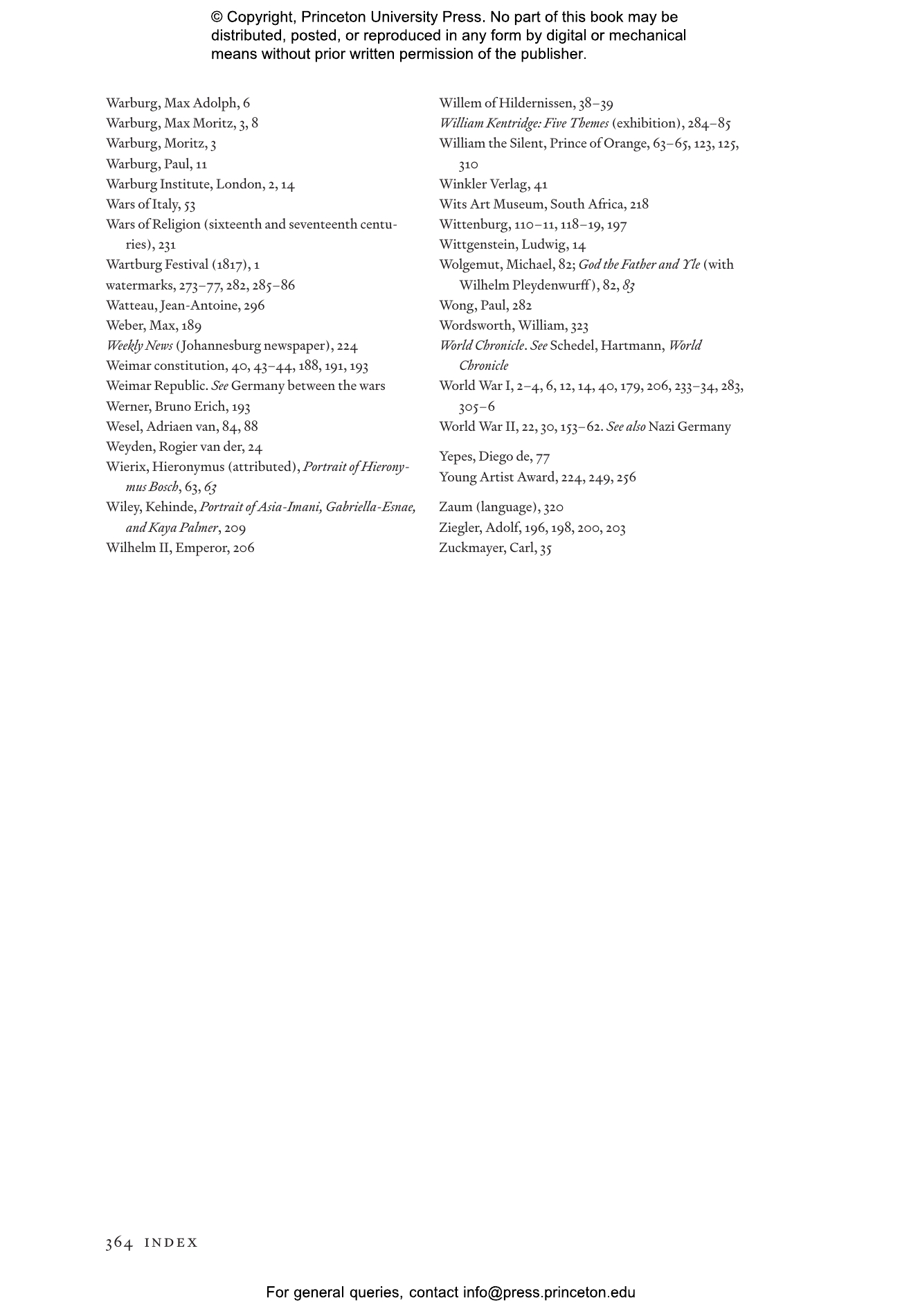What do artworks look like in extreme cases of collective experience? What signals do artists send when enemies are at the city walls and the rule of law breaks down, or when a tyrant suspends the law to attack from inside? Art in a State of Siege tells the story of three compelling images created in dangerous moments and the people who experienced them—from Philip II of Spain to Carl Schmitt—whose panicked gaze turned artworks into omens.
Acclaimed art historian Joseph Koerner reaches back to the eve of iconoclasm and religious warfare to explore the most elusive painting ever painted. In Hieronymus Bosch’s Garden of Delights, enemies are everywhere: Jews and Ottomans at the gates, witches and heretics at home, sins overtaking the mind. Following a paper trail leading from Bosch’s time to World War II, Koerner considers a monumental self-portrait painted by Max Beckmann in 1927. Created when Germany was often governed by emergency decree, this image brazenly claimed to decide Europe’s future—until the Nazis deemed it to be a threat to the German people. For South African artist William Kentridge, Beckmann exemplified “art in a state of siege.” Koerner shows how his work served as beacon during South Africa’s racialist apartheid rule and inspired Kentridge’s breakthrough animations of drawings being made, erased, and remade.
Spanning half a millennium but urgent today, Art in a State of Siege reveals how, in dire straits, art becomes the currency of last resort.
Joseph Leo Koerner is the Victor S. Thomas Professor of History of Art and Architecture and Professor of Germanic Languages and Literatures, Harvard University, and Senior Fellow of Harvard’s Society of Fellows. The author of Bosch and Bruegel: From Enemy Painting to Everyday Life (Princeton) and Caspar David Friedrich and the Subject of Landscape, he has written and presented documentaries for the BBC and wrote, produced, and directed The Burning Child, a feature film on Viennese homemaking in the shadow of the Holocaust.
“Devastating and necessary, Art in a State of Siege illuminates the violent, political, and ethical underpinnings of art history. Koerner, one of the most important historians writing today, recognizes the impossibility of separating the process of history from our individual and collective traumas under siege.”—Caroline Fowler, author of Slavery and the Invention of Dutch Art
“Art in a State of Siege may be Joseph Koerner’s most brilliant book to date, which is saying a great deal. It is also unarguably his most political, and in more than one respect his most fiercely personal. No brief commentary can begin to do justice to the complexity of Koerner’s thinking on every page, or indeed to the intellectual passion, which is the stamp of his considerable achievement.”—Michael Fried, author of The Moment of Caravaggio
“The enemy surrounds us. The walls that we thought were secure are quickly breached. Even as the death count begins to rise, we rage not against the faceless, anonymous foe but against our own neighbors whom we now regard as the most lethal enemies of all. For thousands of years and throughout the world, such has been the recurrent nightmare of human societies. In this startlingly original book, weaving together brilliant interpretations of three major early modern, modern, and contemporary artists, Joseph Koerner provides a new and critically important theory of the function of art in a beleaguered world. Art in a State of Siege is essential reading for our time.”—Stephen Greenblatt, author of The Swerve: How the World Became Modern
“In this masterful triptych, Joseph Koerner reads art history as an ever-changing and unresolved conundrum of power and powerlessness, enmity and humanism, siege and redemption. Rich in surprising twists and uncanny connections, Art in a State of Siege is a brilliantly enlightening book on the perils and promise of art.”—Daniel Jütte, author of Transparency: The Material History of an Idea
“Art in a State of Siege reads like an alchemical manual containing the secret formulas, hidden in plain sight, out of which an ongoingly good art history can be written. Joseph Koerner’s book is a tour de force.”—Alexander Nemerov, author of The Forest: A Fable of America in the 1830s


